Top 10 tips for teaching English to toddlers
How can we teach English to such young children? Is it even possible?
In this article we will discuss the best tips for teaching 2 and 3-year-olds and how to create fun and educational ESL lessons.
Teaching 2 and 3-year-olds can be a lot of fun and extremely rewarding. However, many teachers worry about teaching this age group as it requires teachers to rethink their teaching strategies and classroom management. It is actually much easier than you may think to teach little ones, and once you “crack the code”, you’ll probably enjoy teaching these classes more than any others.
Here are some great tips to get you started.
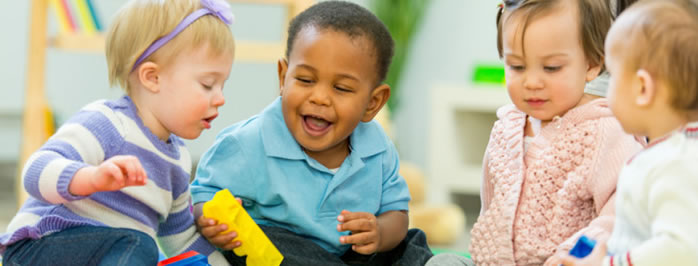
1. Understand their limitations and abilities
Don’t get discouraged that they can’t read or write and sometimes barely speak! There is plenty of time to work on that boring stuff when they get older. 2s and 3s are able to do a lot in class, and the cool thing is, you’ll see huge improvements each time you see them.
Understanding what they are able to do (and not do) is the first step in knowing how you can help them learn English:
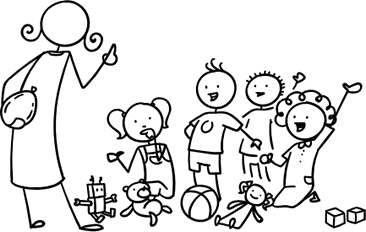
- They are extremely curious – they want to explore the world and learn new things.
- They are able to remember things – they may recall events from the previous day and can remember as many as three objects that are presented visually.
- They can identify what’s missing from a picture or group of objects.
- They are able to follow simple instructions.
- They can identify simple primary [hide_on_uk]colors[/hide_on_uk][hide_on_us]colours[/hide_on_us].
- They are good at naming and labeling.
- They can draw lines, circles and squares with a pencil.
- They can ask many who, what, where, and why questions.
- They love to imitate playmates and adults.
- They can speak in short sentences (4 to 6 words).
- They can say names and ages (usually up to their own age) and use pronouns.
- They can match objects to pictures.
- They have a vocabulary of around 300 words (in their first language).
- They can listen attentively to short stories.
- They can complete puzzles of a few pieces.
- They are able to describe actions in pictures.
- They can take turns in games.
- They can express affection and wide range of emotions.
- They can turn pages in book one at a time.
- They can build a tower of more than a few blocks.
… and much, much more. You’ll be surprised by your students’ abilities every time you see them!
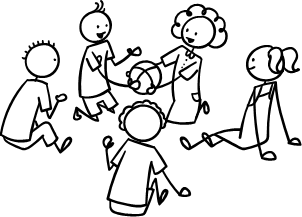
2. Play, play, play!
One of the hardest things to get used to as a first-time teacher of toddlers is the concept of “not teaching”. At this age, kids learn though exploring the world around them and imitating people, and all of this is usually done through play. As such, the teacher should see him/herself as more of a playmate than a teacher.
Sit with your students and explore things, play games and sing songs together, have fun and laugh a lot. Your students won’t care that you are doing this in a strange new language. They will try to talk to you in their language and this is fine – answer back in English and focus on sharing nouns, verbs and adjectives from your own language.
3. Short activities
Toddlers have a short attention span and lose interest in activities very quickly. It’s not that your lesson activity is boring, it’s just that there are so many other fun and interesting things in their immediate environment that demand their attention! Basically, you are competing with everything else in the world for their attention, so changing activities frequently helps to focus their little minds on what you are doing with them.
Make sure that each activity lasts no more than 5 to 10 minutes. Therefore, plan for lots of activities and always have a few extra up your sleeve, just in case!
Your lesson doesn’t have to have 10-15 brand new activities – you can recycle activities from previous lessons, sing songs, read a story, play a game, play with toys or just jump around a bit. I always try to ‘bookend’ calm activities with energy burning activities, to stop them getting restless.

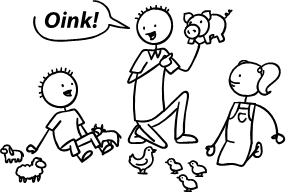
4. Allow a parent to join their child the lesson
I always teach both the toddler and one of their parents together in the class (usually the mother but it can sometimes even be a grandparent!). Your students won’t suffer from separation anxiety and it will make your life as the teacher a whole lot easier. The parent will help with bad [hide_on_uk]behavior[/hide_on_uk][hide_on_us]behaviour[/hide_on_us] and keep their child focused on the activities.
Have the parent sit next to their child (I use cushions on the floor) and take an active part in the lesson. They can help with [hide_on_uk]coloring[/hide_on_uk][hide_on_us]colouring[/hide_on_us] sheets, dancing to songs, playing games, and everything else in the lesson. They are also there to help out with any little problems and toilet emergencies.
You’ll also notice that as the parents know exactly what their child is learning in class, they’ll reinforce learning between lessons – and often teach more. I’ll often notice children coming to class and saying 5 or 6 [hide_on_uk]color[/hide_on_uk][hide_on_us]colour[/hide_on_us] words when we only worked on three in the last class!
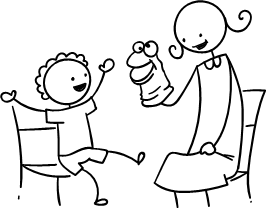
5. Use a glove puppet
Using a fun glove puppet each class (I use Cookie Monster) makes a huge difference in your toddler lessons. Shy students will open up more to a puppet and your students will often become really excited to start class so they can meet their [hide_on_uk]favorite[/hide_on_uk][hide_on_us]favourite[/hide_on_us] puppet! They will think it is real (students sometimes ask me questions about the puppet’s daily routines, etc.) and believe it is their friend.
Start and end the lessons saying hello and goodbye to the puppet and bring him out every now and then to ask students questions or to sing a song.
6. Only teach a few words each lesson
Try not to introduce more than three new words in one lesson. They will have a hard time remembering them.

Some teachers feel that they are not really teaching their students much, if all that they have covered is three new words, but you’ll be surprised at how much more the kids are taking in. Every time you talk (your classroom metalanguage) they take in some of what you say. I’m always amazed when students come out with phrases without being prompted (good job, well done, here, sit down, thank you, what’s this?, pass, give me, etc.) that they have picked up from me. Then there are the songs and stories that also add to their lexicon.
You can use our lesson plans here at ESL KidStuff with your younger learners – simply teach the lesson plan over a series of lessons so they cover three new words at a time, and add some of the extra activities explained in this article.
7. Sing lots of songs
Kids love singing good songs and doing all the gestures and dance moves. They are sponges for learning songs – many a time we revisit a song and I am having to watch my students for the words because I have forgotten some of them!

Songs can be used to introduce or reinforce new words (e.g. “Let’s go to the zoo” for zoo animals), to start or end a section of the lesson (e.g. “The hello song” and “The goodbye song“), as an energy burner (e.g. “Head, shoulders knees and toes“) or a calm down song (e.g. “The rainbow song“). Always review new songs and keep recycling them. You can also take requests – students love telling you what song they want to sing!
We have 50 songs at ESL KidStuff that you can download and sing in class.

8. Use lots of visuals
Students really learn well when their attention is engaged visually. Make sure you have lots of flashcards (we have over 1,500 flashcards at ESL KidStuff), pictures from magazines, posters on the walls, and lots of toys and real objects (realia). Always pass objects around and play simple games, such as catch, as touching and interacting with the objects really helps them to learn.
9. Play lots of games
Toddlers can’t read or write, but they are master game players! Games can be really simple and shouldn’t be too competitive – make sure that everyone is a winner. Here are just a few ideas for simple and fun games:
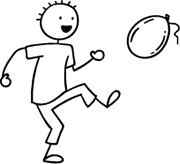
- Patting balloons to each other, or kicking the correct balloon (“kick the blue balloon”)
- Jumping over a rope laid on the ground to pick up an object
- Touching a flashcard from a set of flashcards laid out on the floor
- Retrieving objects and giving to the teacher (e.g. “Go and get me a crayon”)
- Playing “What’s missing” games – students close their eyes as the teacher removes an object or flashcard, then recall what is missing)
- Sitting in a circle and passing a ball around
- Doing action games (“Who can roar like a lion the best?”)

10. Praise all the time
Positive reinforcement is so important at this age. It doesn’t matter if a student gets something wrong, the fact that they tried deserves a round of applause. If the kids enjoy their class, they will return next week because they want to be there … and a side effect is that they will learn English!
When praising, use a variety of phrases (well done, good job, great, wonderful, amazing, fantastic, etc.), give out stickers, give high-fives, draw happy faces on worksheets … and always smile a lot!
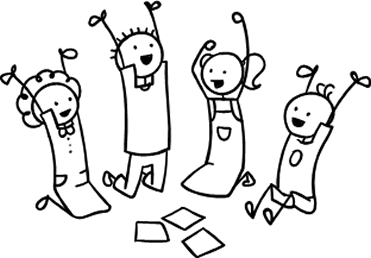
Do you have any great tips for teaching toddles not covered here? If so, please let us know in the comments below!
More ESL articles »
General articles
- 6 different types of ESL learners and how to teach them
- Dealing with bad [hide_on_uk]behavior[/hide_on_uk][hide_on_us]behaviour[/hide_on_us] in an ESL kids classroom
- Using graded readers in the ESL kids classroom
- Word lists: lists of the most commonly used English vocabulary
Top 10 lists
- Top 10 alphabet teaching tips for ESL kids teachers
- Top 10 ESL flashcard exciting games & activities
- Top 10 flashcard simple games & activities
- Top 10 ESL kids lesson plan routines for 7s and under
- Top 10 ESL kids lesson plan routines for 8s and over
- Top 10 ESL listening activities (without a CD)
- Top 10 supplies ands tools for an ESL kids classroom
- Top 10 tips for teaching English to toddlers
- Top 10 tips for using classroom readers in ESL kids lessons
- Top 10 worksheet time activities for ESL teachers and students
Holidays articles

